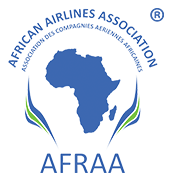Pratt & Whitney: Harnessing the Power of Public and Private Collaborations to Achieve Sustainable Aviation
by Graham Webb is Chief Sustainability Officer for Pratt & Whitney
Hydrogen has an important role to play in enabling the aviation industry’s pathway to net zero carbon emissions. As the world’s leader in aviation propulsion, Pratt & Whitney is focused on developing technologies that take advantage of the potential opportunities this fuel source provides. That’s just one reason why we recently joined a consortium of more than 60 partners from six states intending to establish a clean hydrogen hub in the U.S. Northeast region that connects with a national clean hydrogen ecosystem.
If funded through the federal Clean Hydrogen Hubs program administered by the U.S. Department of Energy, a regional hydrogen hub could coordinate the production, processing, delivery, storage, and end-use of clean hydrogen, which is key to achieving the aviation industry’s goal of net zero air transport carbon emissions by 2050. The New York State Energy Research and Development Authority (NYSERDA) is collaborating with the consortium partners on a proposal.
Partnerships for the acceleration and maturation of technology development are a key aspect of the aerospace industry’s product technology readiness strategy, and Pratt & Whitney has been harnessing the power of collaboration for decades. These partnerships leverage funding, validation facilities, and research expertise that are available in government agencies, including the National Aeronautics and Space Administration (NASA), the Federal Aviation Administration (FAA), the Department of Energy (DoE), the Department of Defense (DoD) and universities. In turn, these partnerships have led to differentiating technologies that contribute to more than two million U.S. jobs* and typically contribute over $40 billion annually to our national balance of trade.
More recently, our collaborative activities have focused on developing the suite of technologies that would be required for the next-generation single-aisle (NGSA) propulsion system. These include:
- NASA: As part of NASA’s Sustainable Flight National Partnership, Pratt & Whitney is developing advanced high-pressure turbine technologies that will reduce fuel consumption and emissions for next generation single-aisle aircraft. The Hybrid Thermally Efficient Core (HyTEC) projects support the development of next-generation ceramic matrix composites (CMC) materials capable of operating at high temperatures, environmental barrier coatings, and advanced cooling and aerodynamic approaches that will enable new component designs for improved engine efficiency.
- FAA: Since 2010 Pratt & Whitney has collaborated with the FAA in multiple Continuous Lower Energy, Emissions and Noise (CLEEN) Program initiatives aimed at developing technologies to drive even higher efficiency, lower greenhouse gas emissions and lower noise in aircraft engines. Most notably, the revolutionary Pratt & Whitney GTF™ engine includes several technologies resulting from CLEEN programs collaborations, including its ultra-low fan pressure ratio, compressor, and turbine technologies. Since entering service in 2016, the Pratt & Whitney GTF engine has enabled single-aisle aircraft operators to save 800 million gallons of fuel, avoid eight million metric tonnes of CO2 emissions, reduce NOx emissions by 50 percent, and reduce noise by 75 percent.
- U.S. DoE: Pratt & Whitney is pursuing hydrogen propulsion in collaboration with U.S. DoE’s ARPA-E program. The Hydrogen Steam Injected, Inter‐Cooled Turbine Engine (HySIITE) project will use liquid hydrogen combustion and water vapor recovery to achieve zero in-flight CO2 emissions, while reducing NOx emissions by up to 80 percent and reducing fuel consumption by up to 35 percent for next generation single-aisle aircraft. Pratt & Whitney also received funding from the DoE to develop water vapor resistant composites for hydrogen-based turbines.
- Canada’s Green Recovery Plan: Hybrid-electric technology could offer even more fuel efficiency and reduced emissions across a wide range of aircraft applications. Supported by the governments of Canada and Quebec, Pratt & Whitney is advancing this technology with a regional aircraft scale hybrid-electric flight demonstrator that targets a 30 percent reduction in fuel burn and CO2 emissions, with plans to potentially apply this technology to larger aircraft. This project is supported by the governments of Canada and Quebec and is on track for ground testing later this year and flight testing of the demonstrator in 2024.
- University partnerships: Pratt & Whitney partners with leading universities such as Pennsylvania State University, University of Hartford, and University of Connecticut for researching aviation propulsion systems that support the design and development of more efficient gas turbine engines. These partnerships allow us to research new technologies and provide students with exposure to a career in the aviation industry. Pratt & Whitney has established a Center of Excellence at the UConn School of Engineering, an additive manufacturing center at the UConn Tech Park, and the Pratt & Whitney Scholars Program provides $1.25 million in tuition assistance to help students from underrepresented groups study engineering at UConn.
The challenge that climate change presents is also an opportunity for the aviation industry to make change through new technology – but we cannot do it alone. Collaboration between the public and private sectors is critical to achieving our climate goals. As the leading manufacturer of propulsion systems for the aviation industry, Pratt & Whitney actively seeks out these mutually beneficial partnerships and we look forward to a clean hydrogen hub that could have a significant impact on reducing the environmental footprint of aviation.
*Aerospace Industries Association 2021 Facts & Figures report
Source: Pratt & Whitney
